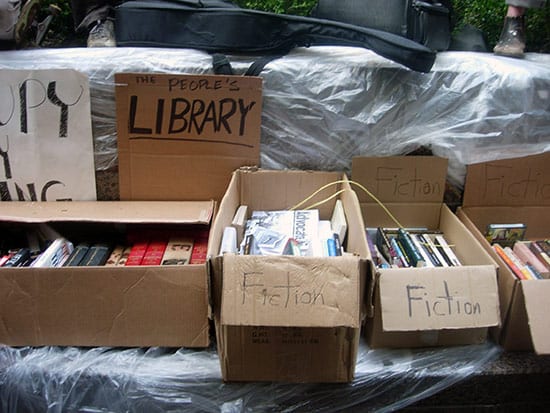By Greg Sholette
December 14, 2011
[Published on the web at the CAA Art Journal HERE.]
Excerpt:
OWS has an odor. Its lustful, repetitious, and messy imagination is articulated not only through fat felt markers on tent flaps and recycled materials, but also on naked bodies, and on moving and dancing bodies, as well as the multicellular superorganism known as the General Assembly. Still, to describe this as an archive—or swarmchive—is to suggest that OWS is more than an accumulation of conceptual, biological, and material textures. It is also something being written, call it a promissory note, an obligation to a future reader from a place already dislocated in time (though admittedly aided by time-bending cybertechnologies like YouTube and Twitter). Not what does, but what will, the archive mean, Derrida once asked, to which he then replied: “We will only know tomorrow. Perhaps.” Tomorrow began at 1:00 a.m. on November 15 for OWS, the hour of Zuccotti Park’s brutal erasure on orders given police by Mayor Michael Bloomberg. The NYPD raid seemed to express something else. Call it a repulsion toward damp, cardboardy smells, and commingled sweat, or a fear of the breathy exhalations emanating from the People’s Microphone, with its mandatory intervals of listening and hearing, and its uncanny pantomime of mechanical apparatus as if some inert thing were being jolted back to life. But perhaps most unsettling of all was the way OWS established a link with the dispossessed and discarded, a tactic Mike Davis perceptively contrasted to the university sit-ins of his generation in the 1960s. It seems that when creatives rebel, they take no hostages; they make no demands.

The Occupy Wall Street People’s Library, Zuccotti Park, October 1, 2011, prior to the police raid (photograph © the author)
 Sunday, January 22, 2012 at 05:43PM
Sunday, January 22, 2012 at 05:43PM  JAMES PANERO,
JAMES PANERO,  NEW CRITERION,
NEW CRITERION,  OCCUPY MUSEUMS,
OCCUPY MUSEUMS,  PARIS COMMUNE in
PARIS COMMUNE in  art and protest
art and protest 
